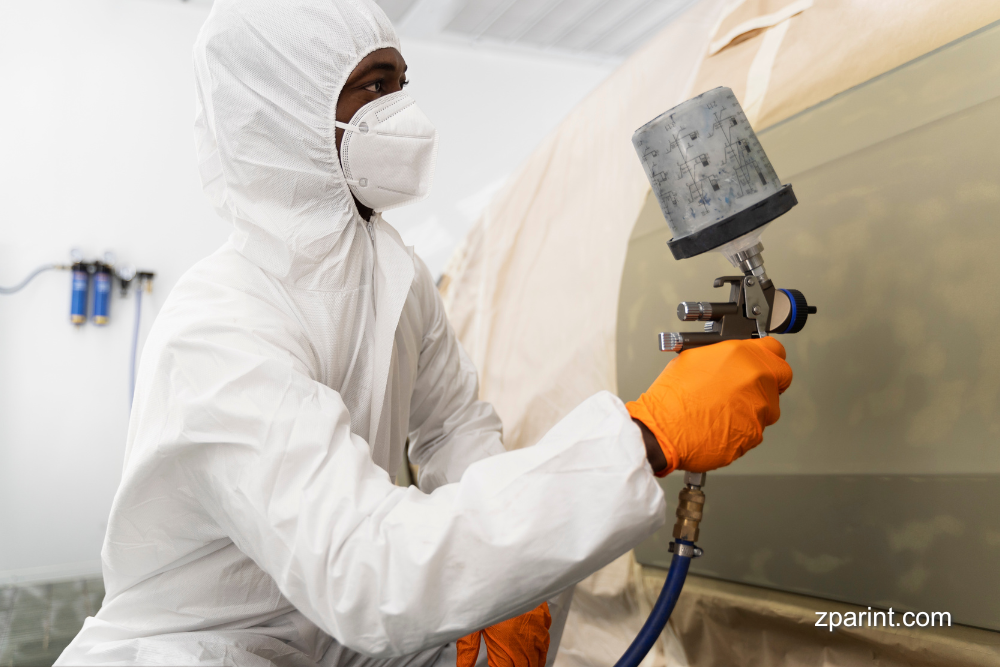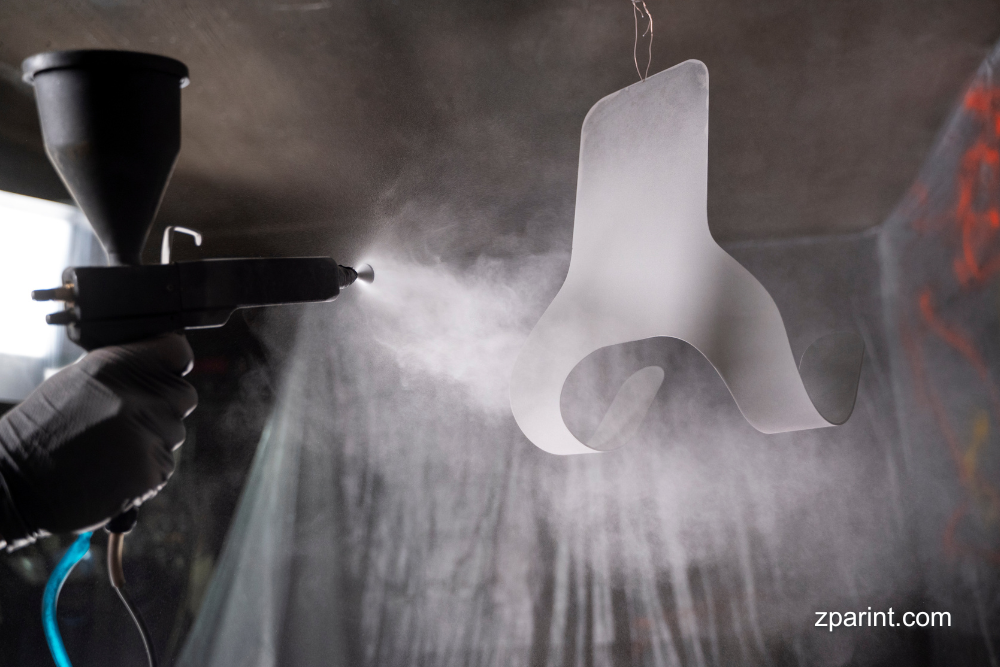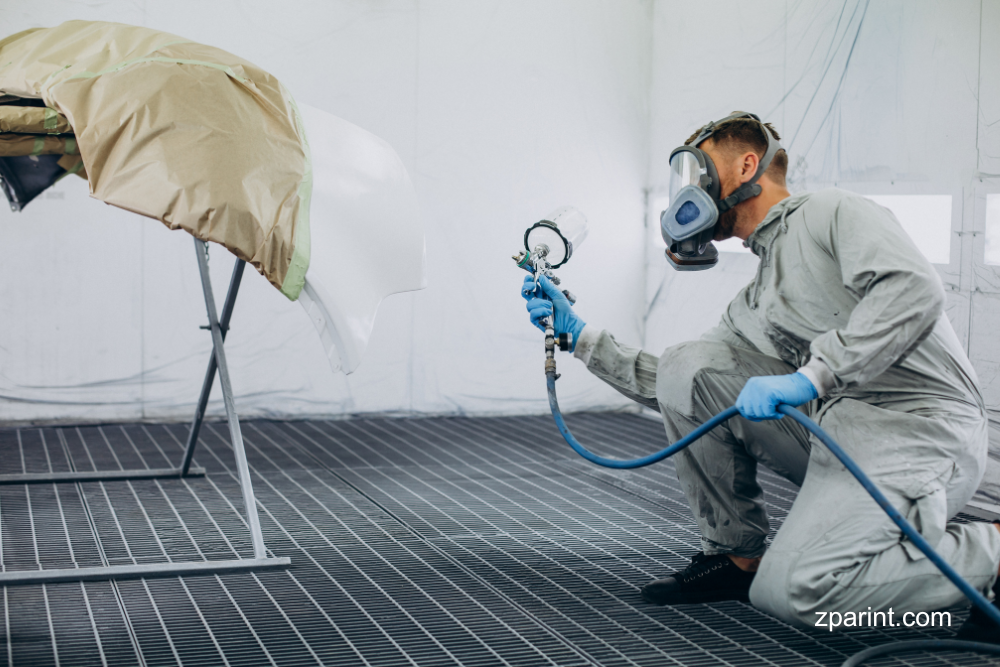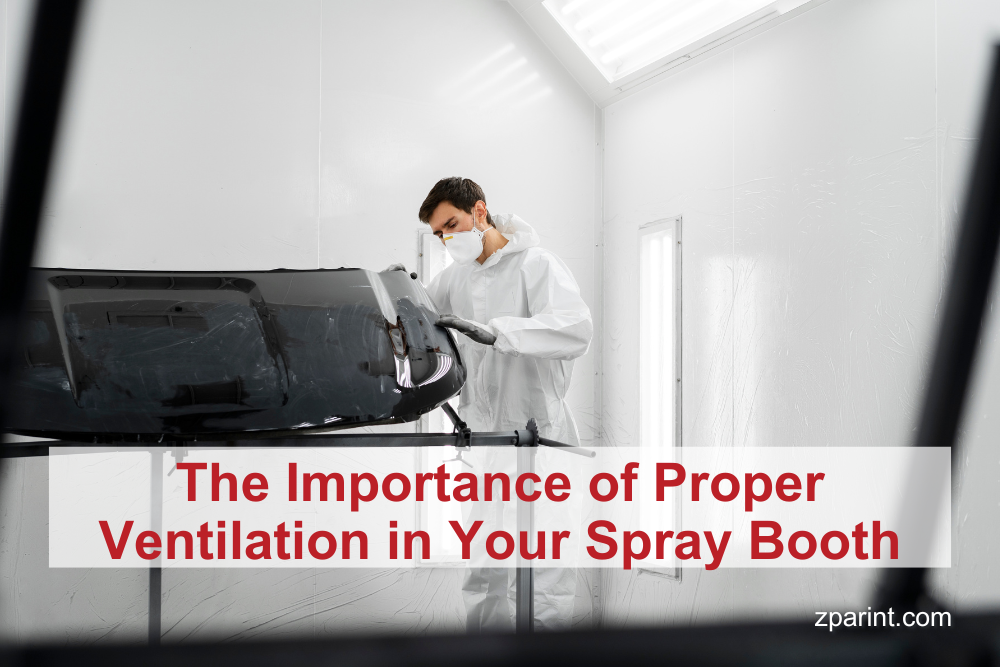Ensuring Safety, Efficiency, and Compliance in Finishing Operations
In today’s industrial finishing operations, a well-designed spray booth is essential—not only for producing quality finishes, but for protecting worker health and maintaining regulatory compliance. One frequently overlooked, yet critical, component is ventilation. Improper airflow and inadequate ventilation can lead to a host of issues, including poor finish quality, elevated fire risks, VOC exposure, and long-term health hazards for paint booth operators.
At Zpar International, we work with professionals across manufacturing, automotive, aerospace, and marine industries, helping them design and maintain optimized finishing environments. In this blog, we’ll break down why proper ventilation is crucial and how to enhance your spray booth’s performance and safety through improved air exchange, exhaust handling, and VOC control.
Proper Air Exchange Rates: The Foundation of a Safe Spray Booth
One of the key factors in spray booth ventilation is maintaining the correct air exchange rate. This refers to the number of times per hour the air within the booth is replaced with fresh air. Too low, and overspray and hazardous vapors linger; too high, and airflow can disturb the application process and increase energy costs.

The required air exchange rate will depend on your booth’s usage and regulatory standards, but common benchmarks include:
– Crossdraft spray booths: 100–150 feet per minute (fpm)
– Downdraft booths: 300–500 fpm vertically
– Batch operations: 4–6 complete air changes per minute
Routine airflow testing and calibration of your system ensure the booth is operating within required parameters and that contaminants are properly exhausted and not accumulating.
Exhaust Systems: Getting Hazardous Fumes Out Efficiently
Effective exhaust systems are the backbone of booth ventilation. Their job is to remove overspray particles and volatile organic compounds (VOCs) before they can compromise indoor air quality or drift into adjacent work areas.
When assessing or upgrading your spray booth exhaust system, consider these best practices:
– Use explosion-proof motors and components when handling flammable vapors.
– Incorporate high-efficiency filters to capture overspray before it exits the booth.
Ensure the ductwork is correctly sized and routed to minimize resistance, thereby improving efficiency and reducing the load on the exhaust fan.

Regular maintenance—such as cleaning ducts, checking filter load, and inspecting blower systems—helps extend equipment life and maintain air velocity within mandated ranges.
Air Makeup Units (AMUs): Balancing Pressure and Comfort
When air is exhausted from a spray booth, it must be replaced; otherwise, the booth becomes negatively pressurized, pulling in dust and contaminants that affect both finish quality and worker comfort. That’s where an Air Makeup Unit (AMU) comes in.
An AMU supplies pre-conditioned (heated or cooled) fresh air to your booth at the same rate it’s exhausted. Its benefits include:
– Maintaining balanced air pressure in the booth
– Reducing temperature fluctuations for consistent coatings
– Improving overall facility energy efficiency
Professionally sized AMUs can also integrate with your building’s HVAC strategy, helping you meet OSHA and EPA compliance while increasing operator comfort and productivity.
VOC Control: Protecting Workers and the Environment
Spray finishing operations release volatile organic compounds (VOCs), which pose serious health risks if not properly vented. Long-term exposure can lead to respiratory issues, dizziness, and an increased risk of cancer, while environmental releases contribute to ozone formation and regulatory non-compliance.
To control VOCs:
– Ensure exhaust systems are adequately sealed and ducted to the exterior.
– Use carbon filtration or thermal oxidizers for high-volume or specialty applications.
– Choose low-VOC or waterborne coatings when possible.
Implementing a proactive air quality monitoring strategy, which includes sensors and routine testing, enables you to document compliance and create a safer work environment.
Protect Your People and Your Productivity with Proper Ventilation
Ventilation is more than just a background system in your spray booth—it’s a fundamental part of keeping your finishing operations safe, compliant, and efficient. From setting correct air exchange rates and optimizing exhaust flow to balancing makeup air and minimizing VOC exposure, each element plays a critical role.

At Zpar International, we specialize in custom-engineered spray booths that are tailored to your unique production environment. Whether you’re installing a new booth or retrofitting existing equipment, our team can design, evaluate, and optimize your ventilation system to ensure safety, performance, and compliance.
Contact Zpar International today to speak with a finishing systems expert and get started on building a safer, healthier work environment.

